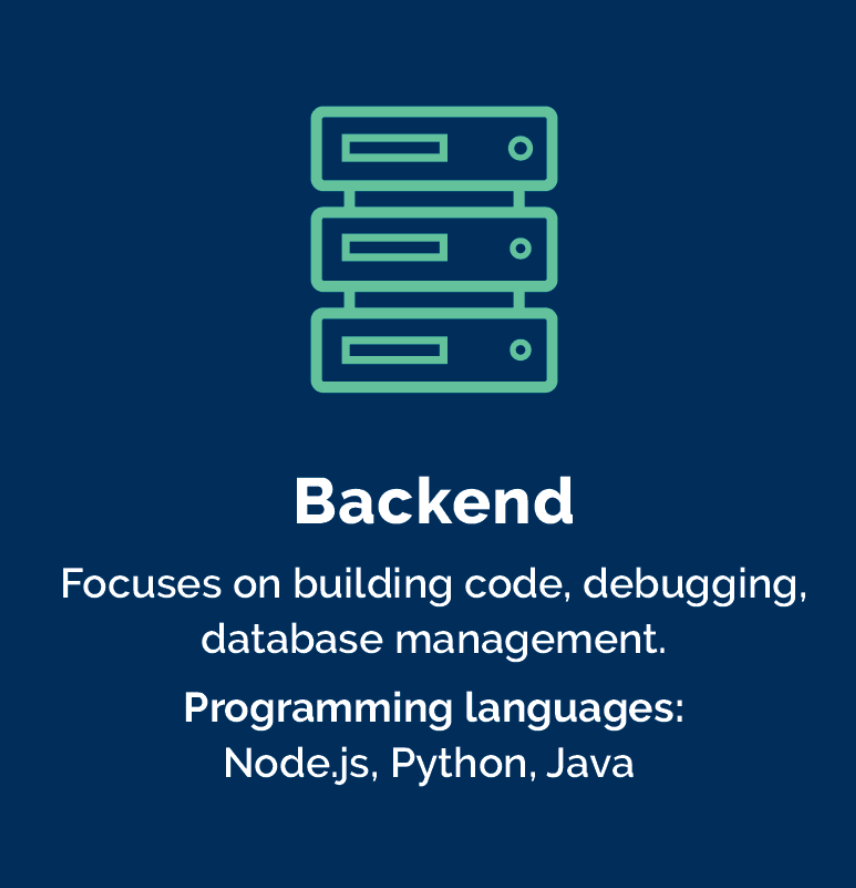Full-stack
Back-End Development
Back-end development focuses on server logic and database management, aspects that support and connect the front-end with the data and business logic of an application. In this chapter, we will explore the essential technologies and concepts for back-end development, focusing on Node.js, Express, MongoDB, and MySQL.

Node.js: JavaScript on the Server Side
Node.js allows the use of JavaScript on the server side, facilitating the construction of scalable and high-performance applications. Node.js is popular in back-end development because it enables working with the same language on both the front-end and back-end, reducing complexity.
Example of a basic server in Node.js:
javascript
Express: A Web Application Framework for Node.js
Express is a Node.js framework that simplifies the process of creating servers and managing routes, making the development of web applications and APIs easier. With Express, it is possible to create routes to handle different requests and manage responses efficiently.
Example of a route in Express that responds to a GET request:
javascript
Databases: Data Storage and Retrieval
In back-end development, databases are essential for storing and managing information. MongoDB and MySQL are two of the most common database options. MongoDB is a NoSQL database suitable for unstructured data, while MySQL is an SQL database that uses a table structure.
MongoDB: NoSQL Database
MongoDB stores data in JSON documents, allowing for a flexible structure that facilitates handling unstructured data. It is ideal for applications that require speed and flexibility.
Example of a connection to MongoDB in Node.js using Mongoose:
javascript
MySQL: Relational SQL Database
MySQL is a relational database that organizes data into tables and uses SQL to handle data. It is suitable for applications that require data integrity and structured relationships.
Example of a connection to MySQL in Node.js:
javascript
APIs: Connection between the Front-End and Back-End
APIs (Application Programming Interfaces) allow the front-end to interact with the back-end to send and receive data. With Node.js and Express, it is possible to build RESTful APIs to handle requests and respond with data in JSON format.
Example of a REST API in Express that responds with a JSON object:
javascript
Conclusion
Back-end development provides the logic and data storage needed for an application's operation. With Node.js and Express, along with databases like MongoDB and MySQL, we can efficiently build and manage robust and scalable applications.
In the next chapter, we will learn about DevOps and how to optimize the development, deployment, and monitoring of applications using tools like Docker and Kubernetes.
Support Chuck’s Academy!
Enjoying this course? I put a lot of effort into making programming education free and accessible. If you found this helpful, consider buying me a coffee to support future lessons. Every contribution helps keep this academy running! ☕🚀

Chat with Chuck














